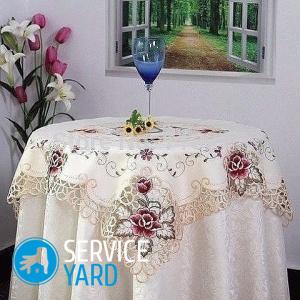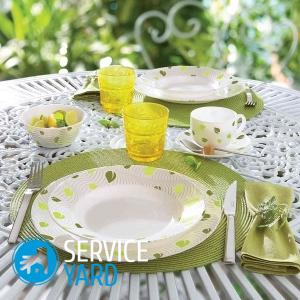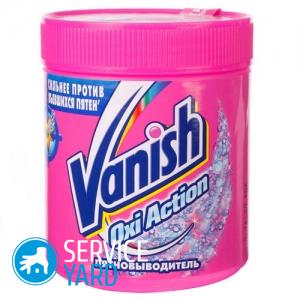How to remove old spots from the tablecloth?
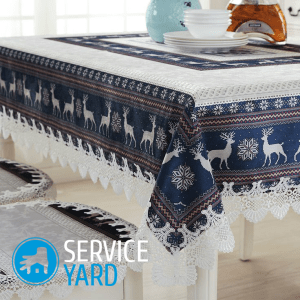
A snow-white tablecloth always gives the table a festive and solemn appearance. But, unfortunately, the spots and the tablecloth are inseparable. Every housewife knows how difficult it is to put kitchen towels, a festive tablecloth after the feast, because no matter how neat the hosts and guests are, any sandwich, pieces of food, spilled sauces, drinks, side dishes will one day leave their mark on family pride. Of course, snow-white table decoration should be washed immediately after the end of the holiday, but, unfortunately, this does not always work out. Today we will tell you how to remove old stains from the tablecloth, because, despite the abundance of household tools and appliances, cleaning fabrics from such pollution does not always end in the victory of the hostess.
to contents ↑Types of pollution
The fight against pollution should begin immediately, without delaying even a second, since it is much easier to cope with fresh spots than with old ones. In addition, household and folk remedies should be used, depending on the type of pollution.
The most common options are:
- Stains from juice.
- Traces of fruits or berries.
- Greasy, oily stains.
- Dark traces of coffee, chocolate, tea.
- Spilled wine (usually red).
- Beer marks.
- Candle wax.
Important! The probability that each dish on the festive table safely leaves its mark on the tablecloth is huge, so practical housewives use coasters, decorative rugs and other appliances for main dishes. However, such a trick does not guarantee full security.
Therefore, if you saw a spot during the feast, then, without attracting the attention of the guests, fill the contaminated area of the fabric with salt. The product will immediately absorb the liquid and the concentration of contamination will decrease. After the salt has absorbed the bulk of the spilled liquid, remove it from the table and pour a pile of clean salt on the contaminated area to minimize stain damage.
Next, we will focus on how to remove stains on the tablecloth at home, depending on the type and complexity of the pollution.
to contents ↑Cleaning rules
If every stain on interior objects is processed according to all the rules, then for many years they will be able to please you with impeccable cleanliness. In order not to damage the tablecloth, cleaning should be done according to the following rules:
- Dry grout first with a brush, and then go to the wrong side and brush over it with a wet brush.
- All manipulations with the cleaner should be done with a soft cloth or cotton swab.
- To remove contamination, start from a clean area near the problem area. Movements should be directed from the periphery to the center of the spot.
- Before using aggressive stain removers, check their effect on an inconspicuous area of tissue. The sample is best performed with a diluted composition.
- After cleaning, be sure to wash the product in the usual way.
Important! In the old days, a tablecloth on the table is a necessary piece of furniture. Now they set the dining table on it only when companies gather to celebrate any events. This is, indeed, an important element of decor at the festive table, so it is worth paying special attention to it. We have prepared a separate review, which described in detail tablecloth design.
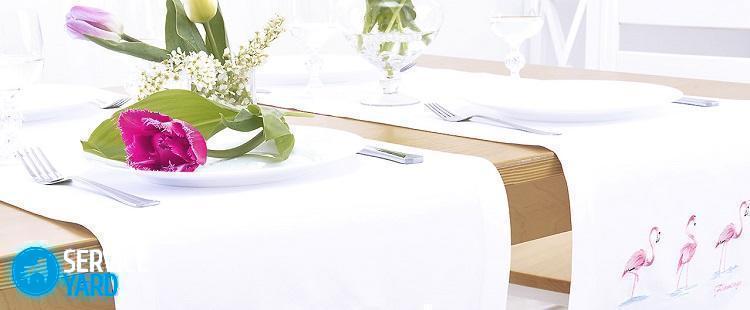
How to remove fresh spots?
Fresh contaminants are the easiest to handle. You can use both household remedies and folk recipes in the fight against stains. We suggest you use the following tips to help remove stains on the tablecloth:
- Any fresh spots quickly disappear thanks to the chalk powder. Apply the product to the problem area, and after a couple of hours, remove the composition with a brush.
- Stains from the juice can be easily removed with a mixture of glycerin and vodka. A solution consisting of 1 cup of hot water, 0.5 teaspoon of hydrogen peroxide and 0.5 teaspoon will also help remove traces of fruit juices. ammonia.
- Traces of fruit will be removed by a concentrated solution of citric acid. You can use fresh citrus. Cut the lemon in half and rub thoroughly with the half of the citrus the problem area. Fruit stains can be removed with a solution of soda or ammonia. After cleaning, rinse the cloth with water.
- To remove fruit stains from a snow-white linen or cotton tablecloth, soak the product in milk and then wash.
- Fatty blots well absorb potato starch. Place a paper towel under a greasy drop, and sprinkle starch on top of the stain. After 5 minutes, renew the composition. After 2-3 dry cleaning procedures, the greasy stain will disappear.
- An effective cleaning of sebaceous spots is possible with chalk powder. Sprinkle dirt, and after a couple of hours, remove the remnants of the product.
- Dishwashing liquid will effectively remove fresh greasy stains, as it contains special substances that break down fat. Follow the link to learn about safe dishwashing detergents.
- Remove the fat from the tablecloth will help a solution of 3 tbsp. tablespoons of ammonia and 0.5 teaspoon of salt. Apply the mixture to the problem area (for 30-40 minutes). After cleaning, wash the product in a powder washing machine.
- Dark spots from coffee and tea will disappear if treated with hydrogen peroxide and left for 10-15 minutes. After this time, rinse the treated area with clean water. Effectively fights coffee stains and warm glycerin or a mixture consisting of glycerin and salt. Rub the problem area with a mixture, and then wash the product.
- A mixture of egg yolk and glycerin will cope with traces of red wine. Wipe the stain with a mixture, then wash the product in the usual way.
- You can also remove traces of red wine by soaking the product in a solution of hydrogen peroxide (1 teaspoon of peroxide in 1 cup of water). You can also use a solution of citric acid for soaking (for 1 cup of warm water - 1 teaspoon of citric acid). Rinse thoroughly after soaking.
- Traces of paraffin will be removed by a hot iron. First of all, scrape off as much wax as possible using a knife. Then - cover the stain with a paper towel and iron it with an iron. Paraffin is absorbed into the paper, and there will be no trace of the stain.
If it was not possible to clean up the pollution in time, then stain removers and folk remedies will help to rectify the situation, which we will discuss below.
Important! If it was not possible to remove stains from the tablecloth, then it is better to sew a new one. Follow the link and find useful tips. how to sew a tablecloth with your own hands.
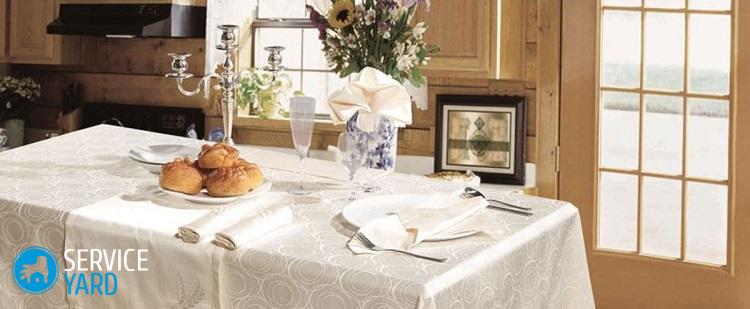
How to remove old stains on a tablecloth at home?
If the stains on the product are already several years old, then getting rid of them can be quite difficult. For old stains on towels and tablecloths, use “heavy artillery” in the form of bleaching powder or stain remover for clothes.
Digestion from any stains
For natural fabrics, to remove old spots from the tablecloth, you can use digestion:
- Boil water in a large pot or bucket (10 L).
- Add to the water 2 tbsp. tablespoons of bleaching powder (stain remover) and 1 cup of any washing powder. The main thing is that the powder does not foam much.
- Add to boiling water 2 tbsp. tablespoons of refined vegetable oil.
Important! If you need to remove stains on white kitchen towels, then add detergent and a little silicate glue to the boiling water. Boil the towels in the solution for half an hour and they will become snow-white again.
- Put the mixture on the fire and let it boil.
- Remove the container from the heat and place the tablecloth in it.
- Allow the soap solution to cool.
- Remove the product and rinse thoroughly.
Important! If you do not know how to whiten the tablecloth from yellow spots, then use the method described above. This option will help to remove even the oldest stains on kitchen towels and tablecloths, however, some nuances should be taken into account:
- The method is suitable only for natural fabrics.
- You can not soak products of different colors at the same time.
- If you do not use vegetable oil, then the method will be ineffective.
Oil stains:
- Old greasy stains can be removed in another way: soak the product in hot water and rub it thoroughly with household soap. Put the soaped thing in a plastic bag for several hours, and then wash in the usual way.
- To cleanse the natural tissue from the greasy trace, you can use purified gasoline. Under a trace of fat, put a blotter moistened with gasoline, and clean the salinity itself from the edges to the center until the stain is completely dissolved. After complete breakdown of fat, thoroughly rinse the problem area, and wash the thing in the washing machine.
- Use heated starch to get rid of old greasy stains on natural fabrics. Heat the product in a metal bowl and apply to the problem area. After the starch has cooled, shake it off and replace it with a new heated portion.
Important! You can also use potato flour for greasy stains. Dilute the product to a gel state and apply to greasy contamination. After a few hours, remove the mixture, and clean the remaining stains with gasoline and blot with the pulp of browned bread.
- Organic solvents such as gasoline, turpentine, alcohol or acetone will help remove oily blots on a natural fabric. If the stain is old, then use turpentine followed by treatment of the area with concentrated soda solution.
Important! If after processing blue or violet traces remain on a white tablecloth, then boil the product by adding a small amount of hydrogen peroxide to the water.
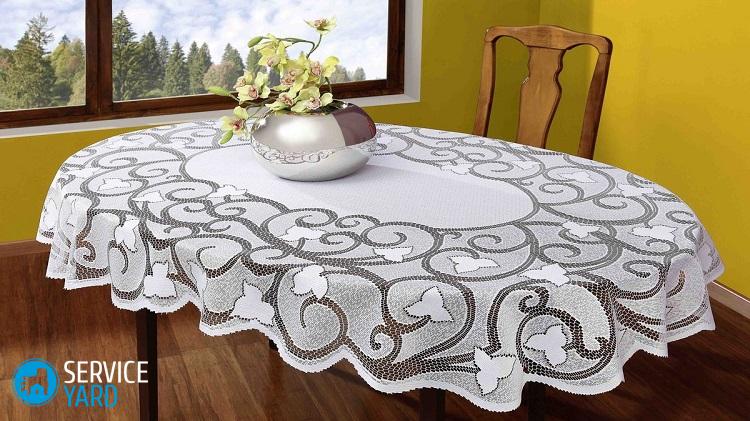
Soda - an effective assistant in the fight against stains
Restoring the whiteness of the tissue after removing greasy stains is possible with soda:
- Place the product in a warm soda solution for a day.
- After a day, squeeze the thing, and thoroughly treat the problem area with laundry soap on both sides.
- Fold the product four times and roll up.
- Leave the parcel without water for a day.
- Pour boiling water on the tablecloth, boil for half an hour.
- After the fabric has cooled, wash it manually.
- Rinse the product thoroughly and dry.
Expensive fabrics
Very often, festive tables are covered with expensive materials, which are very difficult to clean from fat. To remove a greasy stain from such matter, listen to the following tips:
- Remove fat from velvet or plush with alcohol;
- With wool - gasoline;
- From silk - with a solution of glycerol and ammonia (for 1 tbsp.spoon of water: 1 tbsp.spoon of glycerin and 0.5 tbsp.spoon of ammonia).
Apply the reagent to the contaminated area and rinse it with water after 10 minutes.
to contents ↑Stock footage
The path to success in the fight against stains is speed, so proceed to solve the problem immediately. And if after the celebration you can’t immediately wash the tablecloth, at least soak it in soapy water with citric acid or hydrogen peroxide. We hope that our tips and tricks have helped you tidy up the tablecloth, and now she again pleases the eye with her snow-white and solemnity!





